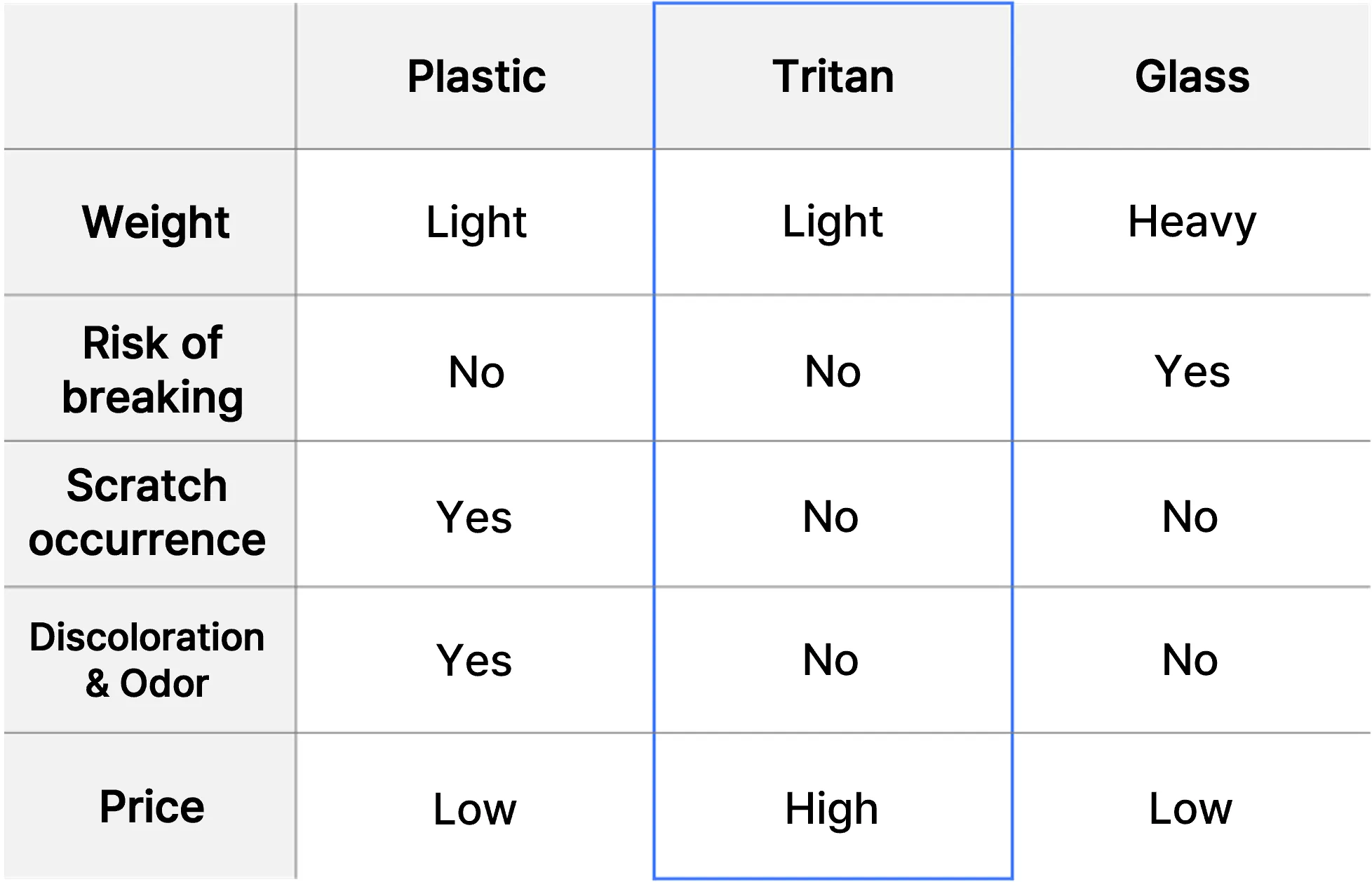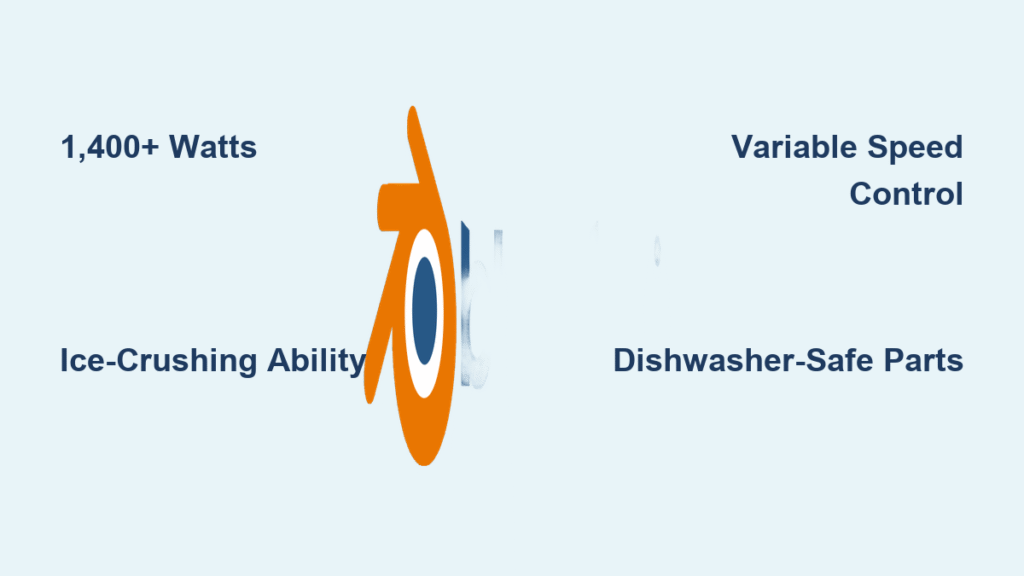That dusty appliance gathering crumbs on your counter? It’s probably your old blender—the one that leaves kale bits in your smoothies and struggles with frozen fruit. You’re not alone. Millions face this daily frustration when their blender can’t keep up with modern recipes requiring silky-smooth textures and versatile functionality. The good news is that finding your perfect blending companion doesn’t require deciphering marketing jargon or breaking the bank.
Your ideal blender exists, and this guide cuts through the confusion with practical, real-world advice based on actual performance testing. Whether you’re a daily smoothie drinker tired of straining fibrous bits or a weekend cook wanting restaurant-quality sauces, we’ll help you select a blender that matches how you actually use it—not how marketers think you should.
Match Blender Types to Your Actual Usage Patterns

Why Premium High-Performance Blenders Justify Their Price Tag
If you regularly blend frozen ingredients, nut butters, or hot soups, a 1,400+ watt premium blender like Vitamix or Blendtec delivers consistent results where others fail. These machines create a powerful vortex that pulls ingredients down toward the blades, eliminating the need for constant tampering. The 7-8 year warranties reflect their professional-grade construction—making them cost-effective if you blend daily.
Critical reality check: That $700 blender used daily for five years costs just $0.38 per use. Compare this to replacing $80 models every 18 months that can’t handle your regular smoothie routine.
When Conventional Blenders Actually Make Sense
Don’t dismiss standard $40-$150 blenders if your needs are modest. These workhorses handle milkshakes, fruit purees, and basic sauces admirably. Look for models with 48-64 ounce capacity if you’re serving multiple people. However, immediately rule these out if you regularly blend hot liquids or expect perfectly smooth green smoothies—they’ll overheat and leave fibrous strands.
Pro tip: Skip conventional blenders if ice crushing matters to you. Most claim this capability but fail dramatically, leaving dangerous chunks even after extended blending.
Personal Blenders: Space-Saver or Single-Use Gimmick?
Compact blenders shine for single-serve smoothies in small kitchens. The $20-$500 range shows extreme performance differences—basic models struggle with anything beyond yogurt, while premium versions like NutriBullet Pro handle frozen fruit reasonably well. Their under-17 inch height makes them perfect for cramped countertops where larger models won’t fit.
Warning: Don’t believe “all-in-one” claims. These can’t replace countertop blenders for family-sized batches or tough ingredients like nuts.
Decode Marketing Hype Into Real Performance

Wattage Truths They Won’t Tell You
That 1,800-watt claim might be peak motor output during startup—not sustained blending power. Focus instead on these practical ranges:
– 300-600 watts: Only for soft fruits and light tasks
– 800-1,200 watts: Handles ice and fibrous vegetables
– 1,400+ watts: True professional capability
Expert insight: A well-engineered 1,200-watt blender often outperforms a poorly designed 1,800-watt model. Look for third-party performance tests rather than manufacturer claims.
Speed Settings That Actually Matter
More than ten speed options usually means unnecessary complexity. Prioritize these essentials:
– Pulse function for precise control
– Dedicated ice-crushing setting if you make frozen drinks
– Variable speed dial for texture control
Testing reality: Professional evaluations show top performers create uniform snow from ice in 30 seconds, while weak models leave dangerous chunks after 2 minutes of blending.
Container Materials: What Survives Daily Use

BPA-Free Tritan Plastic: The Premium Standard
Most high-end blenders use this shatterproof material that won’t break when dropped. While it may absorb strong odors over time, immediate rinsing after garlic or spices prevents lingering smells. Dishwasher safe on top rack only—never subject it to harsh dishwasher detergents.
Glass Containers: Stability With Risk
Heavier glass bases provide stability but carry the risk of shattering if dropped. They won’t stain or absorb odors, making them ideal for tomato sauces. Common in $80-$200 models, they’re perfect if you prioritize durability over portability.
Critical warning: Dropping a full glass container often means replacement costs equal to a new budget blender.
Essential Features That Prevent Daily Frustration
Control Systems That Match Your Cleaning Habits
- Dial controls: Offer infinite speed adjustment but collect grime in crevices
- Push buttons: Easy wipe-down but limited speed options
- Touch panels: Sleek appearance but moisture-sensitive
- Preset programs: Worthwhile for smoothie/soup routines
Pro tip: Models with sealed control panels prevent liquid damage during countertop splashes.
Blade Design That Actually Works
Fixed blades create better vortex action and last longer than removable versions, which often develop leaks after extended use. Multi-tier blade assemblies blend more thoroughly, especially for thick mixtures like nut butters.
Cleaning reality: Even “self-cleaning” cycles require weekly hand-washing of blades to remove stuck-on residue.
Budget Smart: What Each Price Tier Delivers
The $100-$300 Sweet Spot for Most Households
This range offers the best value for regular users. You’ll get sufficient 800-1,200 watt power for daily smoothies, better construction quality, and 3-5 year warranties. Models like Ninja Professional BL660 include useful presets at half the cost of premium brands.
Red flag: Avoid models under $50 claiming ice-crushing capability—they fail dramatically in real-world testing.
When Premium Justifies the Investment
Choose Vitamix or Blendtec if:
– You blend daily for family meals
– You make nut butters or hot soups weekly
– You want a machine that lasts 7-8+ years
– Texture perfection matters for green smoothies
Space constraint solution: The Vitamix E310 stands under 17 inches tall—perfect for standard cabinetry.
Match Features to Your Real-Life Routine

Daily Smoothie Drinkers: Your Non-Negotiables
Priority list: Smooth texture, fibrous ingredient handling, easy cleaning
Must-have features: Tamper tool, 1,200+ watts, variable speed control
Top recommendation: Vitamix E310 ($350) for compact kitchens or Blendtec Designer 725 ($450) for smart features
Critical mistake: Skipping the tamper tool guarantees uneven blending with leafy greens.
Weekend Occasional Users: The Smart Compromise
Priority list: Simple operation, compact storage
Must-have features: Basic speed settings, dishwasher-safe parts
Top recommendation: Ninja Fit ($80) for value or NutriBullet Pro 900 ($100) for single-serve convenience
Pro tip: Buy the smallest capacity that meets your needs—oversized containers make single servings difficult.
Smart Shopping Strategy That Prevents Regret
In-Store Testing Protocol
Visit retailers with demonstration units. Bring your challenging ingredients:
– Frozen mango chunks to test ice-crushing capability
– Raw kale to evaluate fibrous ingredient handling
– Almonds to assess nut butter potential
Listen carefully: Quality machines operate noticeably quieter—excessive noise often indicates poor engineering.
Warranty Reality Check
- 1-2 years: Budget models (expect replacement within 3 years)
- 3-5 years: Mid-range protection (good value)
- 7-8 years: Premium investment (justifies higher cost)
Fine print alert: Some warranties exclude commercial use or require registration within 30 days—read before purchase.
Maintenance Secrets That Extend Lifespan
Daily Cleaning Routine That Works
Fill container halfway with warm water, add a drop of dish soap, and blend on low for 30 seconds. Rinse thoroughly—this prevents residue buildup that dulls blades over time.
Critical warning: Never submerge the motor base. Water damage voids most warranties—wipe with a damp cloth only.
Storage Solutions for Longevity
Store containers upside down to prevent dust accumulation. Keep blades dry to prevent rust—moisture is the #1 cause of premature failure in otherwise quality machines.
Final Selection Framework: Your Quick Decision Guide
Choose Premium if: You blend daily, make nut butters, or want 10+ year lifespan
Choose Mid-Range if: You blend 3-4 times weekly and want good value
Choose Budget if: You blend occasionally and prioritize low cost
Space constraint solution: Under 17 inches tall? Stick with personal blenders or specific low-profile models like Vitamix E310.
Power user truth: The perfect blender isn’t the most expensive—it’s the one you’ll actually use and enjoy. Start with how you’ll really use it, then choose features that support those specific needs. Your blender should match your actual habits, not aspirational cooking plans.



